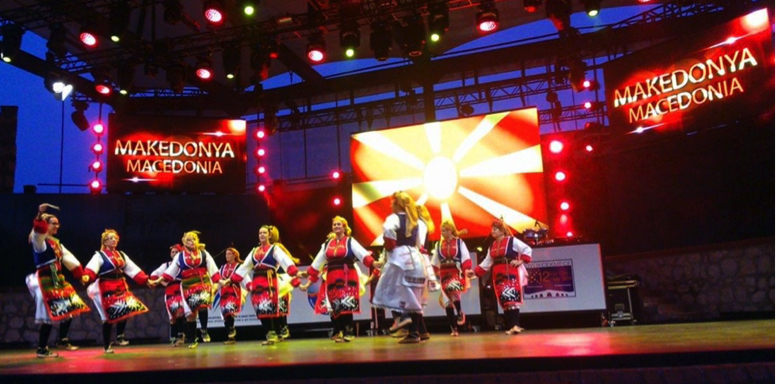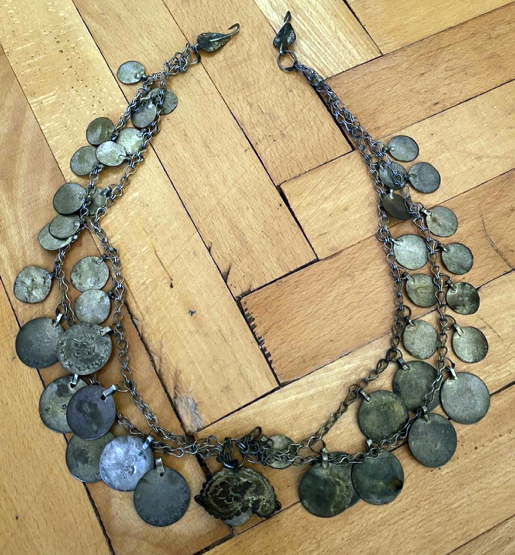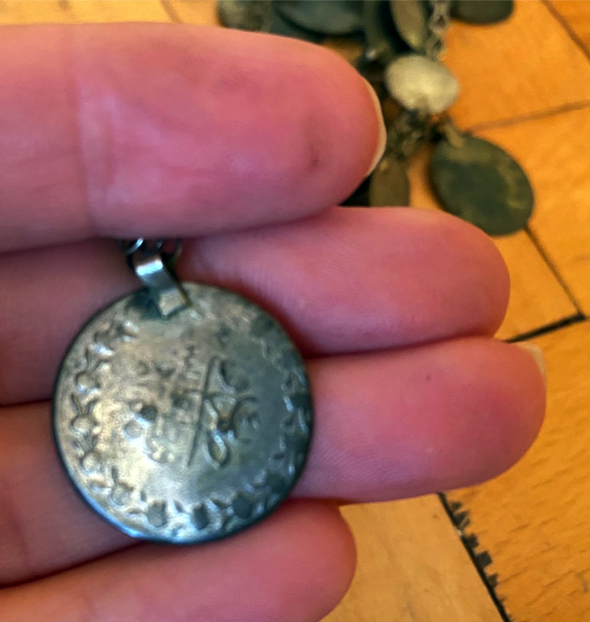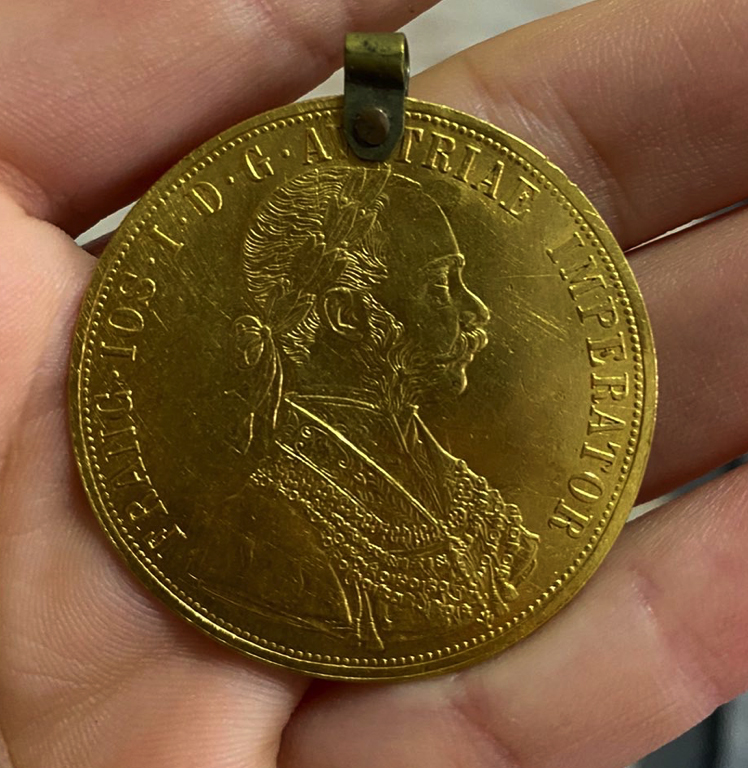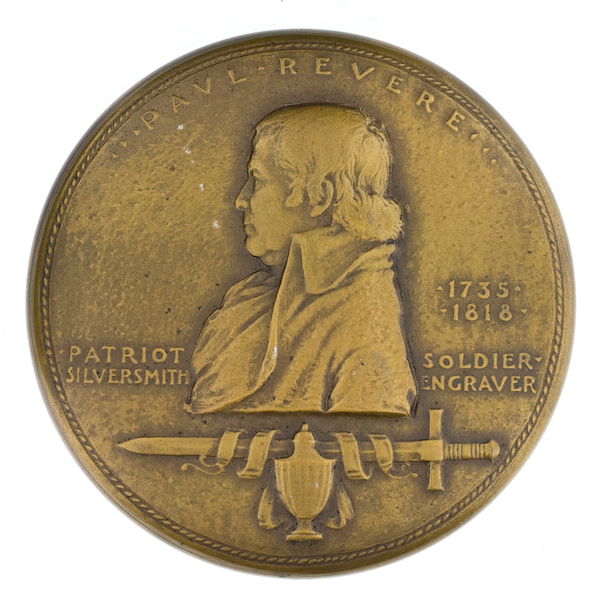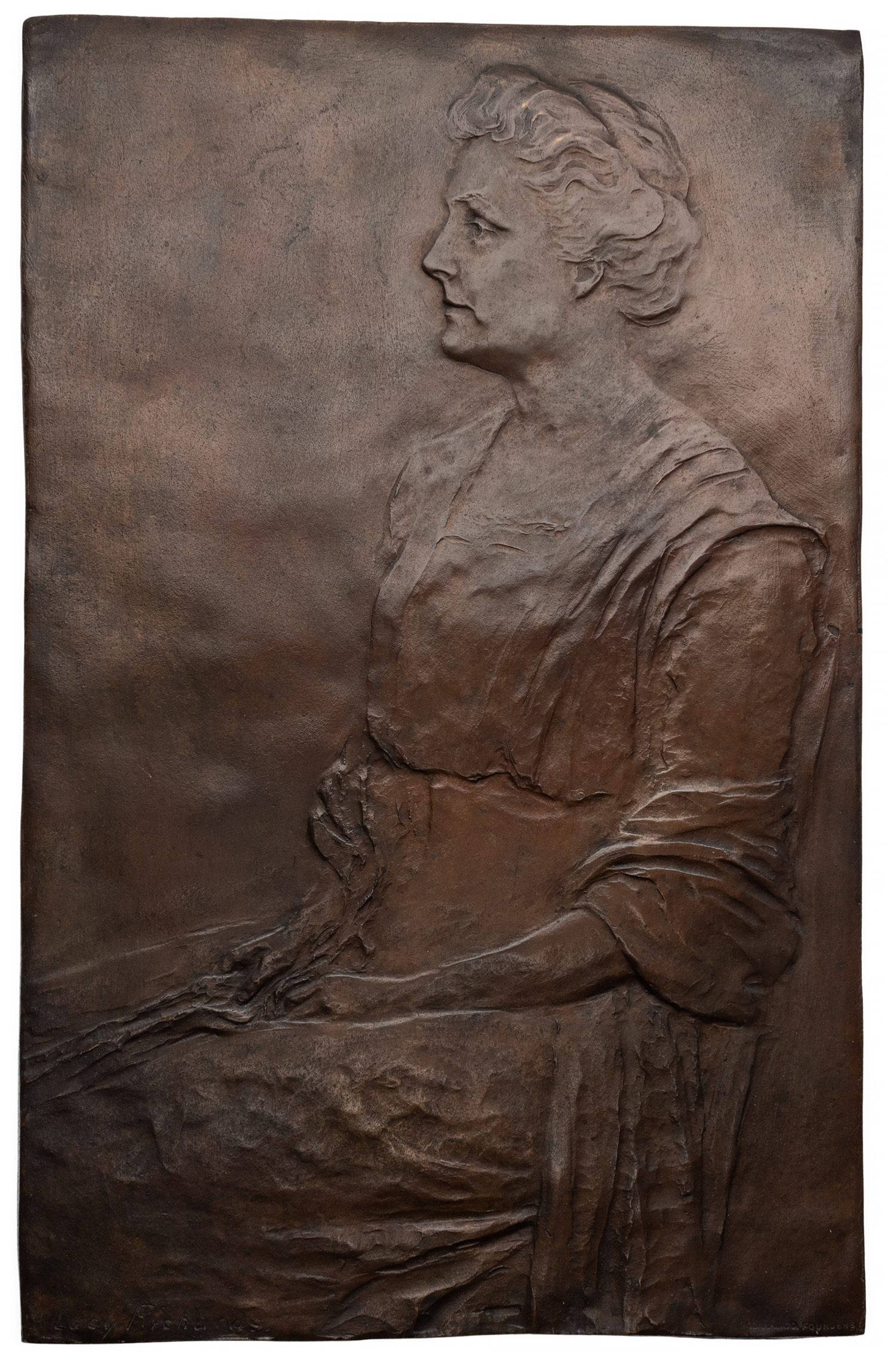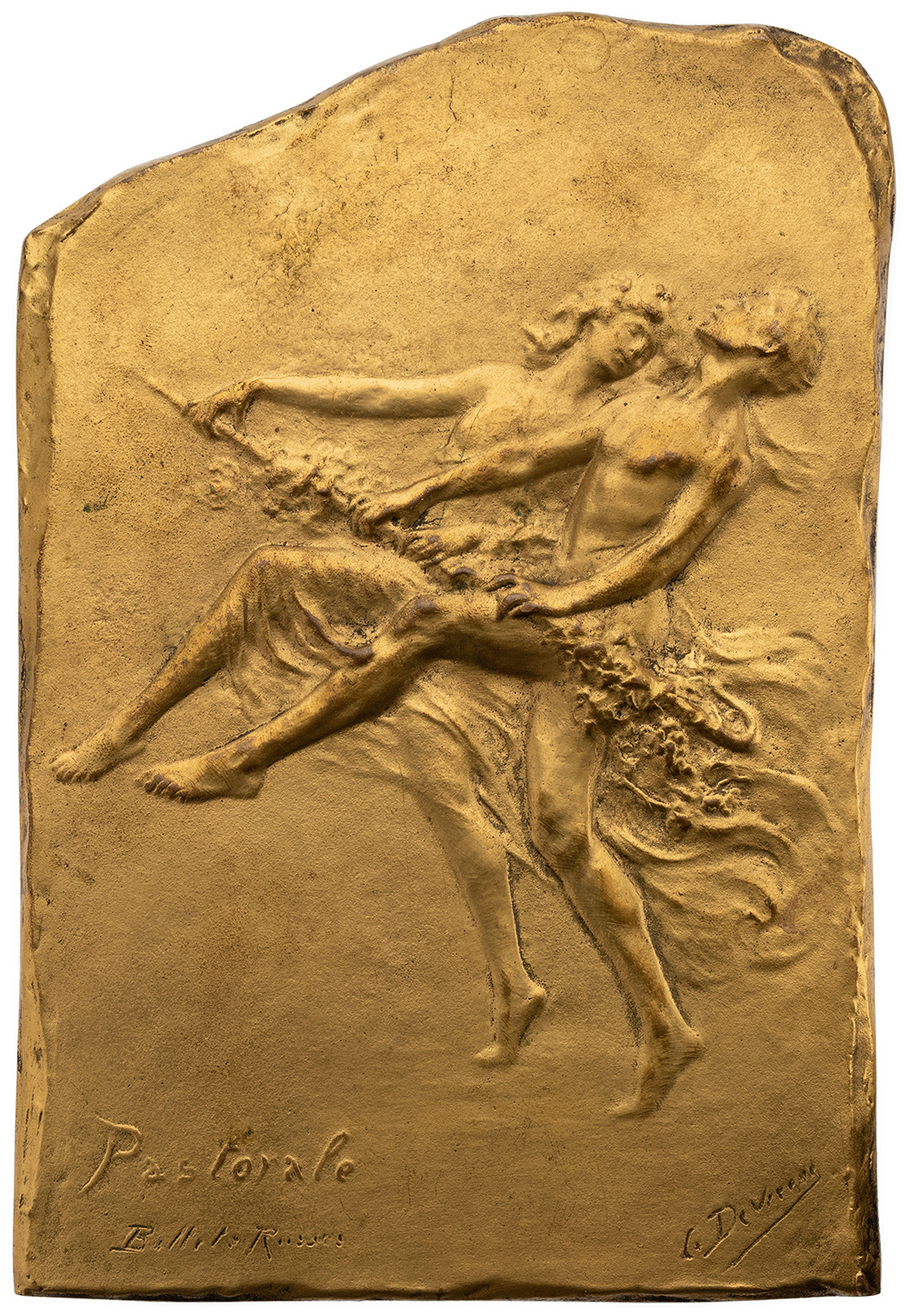Coins, but Make it Fashion
A few weeks ago, I wrote a piece for Pocket Change about coins baked in bread to predict the future in the Balkans. These instances got me thinking about other ways that coins play a significant role in a different context in contemporary North Macedonia; namely, how coins are worn in clothing, often as part of women’s outfits for special occasions.
In winter 2017, I attended a folk dance performance at the House of Culture in the town of Radoviš in southeastern Macedonia. Jasmina Ilieva danced hand-in-hand in synchronized step with a group of 17 other women, all dressed in the same traditional outfit. Braided leather shoes bounced lightly across the stage under heavy woolen socks; woven crimson patterns criss-crossed matching aprons. Some of the women wore chains of small metal disks affixed across their vests, tinkling in time to the music. Jasmina wore a similar chain, but instead of blanks, it bore two rows of silver coins, glinting in stage-light as the shifting semi-circle came to a halt.
The coins Jasmina wore were “old silver,” she told me, Ottoman issues that circulated 150 years ago. She inherited them from her grandmother alongside the vest and apron of her outfit. Her grandmother, a woman from a village in the Lakavica valley south of Radoviš, had worn them on her wedding day. Jasmina bragged that she was the only one from her group who didn’t wear newly-bought pieces, that her outfit was the most authentic. Upon close examination, there were subtle differences in the quality, age, and even the patterns in each dancer’s clothing.
In the audience, Jasmina’s mother, Teta Lila, described to me how traditional outfits simultaneously highlighted individuality and diminished it. Elaborate embroidery advertised domestic prowess. Both the quality of materials and the quantity of the silver indicated particular access to wealth. Teta Lila explained how the clothes also marked them as a part of a collective. If, she told me, you went to the open-air bazaar in Radoviš a hundred years ago, you could look around and casually identify not only someone’s religious and ethnic background by their clothes, but even their specific village of origin. The patterned outfits the dancers wore included local variations, reflecting those historic distinctions. With some exceptions, traditional outfits in the region are preserved primarily only for performance and events, not worn in daily life.
The coins here function in a few ways. They’re percussive, contributing to the overall aural experience of the observer; they jangle rhythmically along with the cyclical music. Further, while they represent an actual facet of traditional clothing, there’s also something more to be said for their place as an authenticating feature in contemporary performance. When these outfits were worn in their original contexts, the silver implied wealth and suggested a local story of inheritance, reflecting an identity tied up in family and community. Today, they showcase a different kind of inheritance, a historical and ethnic one. As with other examples of historical reenactment, clothing as a costume for a performance of some aspect of the past, authenticates and perpetuates a construction of that past. The coins, in turn, as artifacts, authenticate the outfit. Folklore performances, common across the country and frequently sponsored by municipal governments, feature not only as a popular form of entertainment or local identification, but also aim to solidify and perpetuate notions of ethnic and national identity. Later that year, Jasmina and her group went to Istanbul, among representatives of 61 countries, to represent Macedonians at the annual International Folk Dance and Music Festival. Performances of this sort aim to secure both internal and external understandings of what comprises a particular group.
When I talked to Jasmina about her traditional outfit, she enthusiastically elaborated on other examples of coins integrated into Macedonian clothing, mostly related to wedding dresses. She’s one of three sisters and their father has kept large gold coins for each of his daughters to wear on her wedding day. At Jasmina’s wedding, she wore a 1913 Austrian ducat with a bust of emperor Franz-Josef on the obverse; her younger sister wore a similar piece when she got married a few years later. Jasmina indicated that their oldest sister didn’t have hers yet, since she remains unmarried. Similar to this practice is how Albanian brides wear gold and gold coins as either part of a necklace or sewn into their dresses or headpieces. Albanians, who represent about a fourth of the population of North Macedonia, have a tradition that brides should wear gold not only as something of a dowry, but also as representative of these women’s historically unique power of divorce. An Albanian wife could divorce her husband in a socially-sanctioned process by keeping the gold, which exclusively belongs to her. With this to establish a separate life from a former spouse, the brides’ coins symbolize both marriage and are a gentle threat of independence in a patriarchal system.
In these examples, coins are jewelry, they make noise, they indicate aspects of culture, including national and ethnic identity, gender expectations, and social standing. Reflecting on such moments where coins play various roles in clothes in the southern Balkans, I’m reminded again how coins are much more than just economic or political objects. Coins gave me a new lens to appreciate and analyze these practices and to think a little more critically about the work that they do in context.


